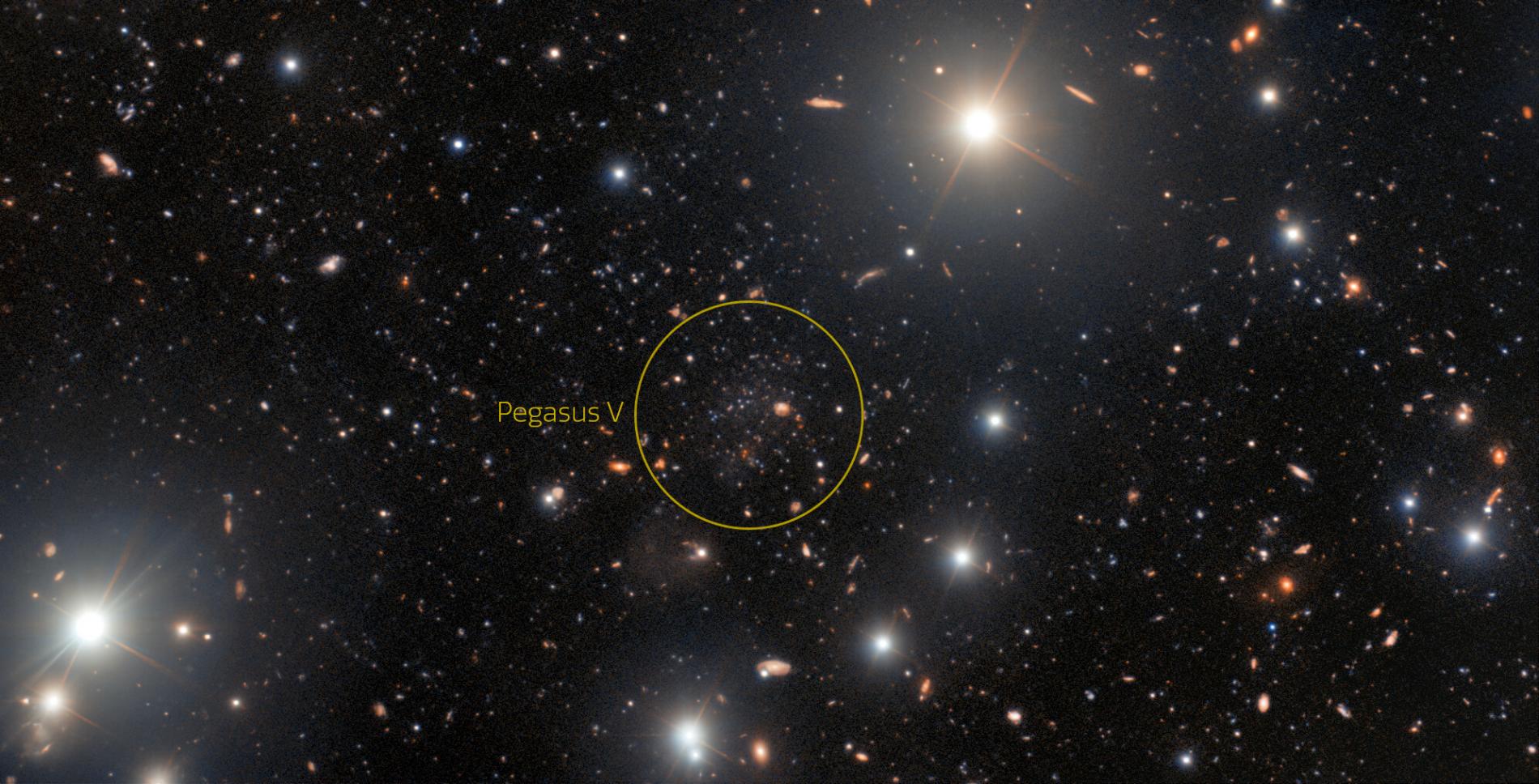Possible galactic fossil found near Andromeda
An unusual ultrafaint dwarf galaxy has been discovered, within the framework of a project led by the Institute of Astrophysics of Andalusia (IAA-CSIC), in the outer limits of the Andromeda galaxy. Named Pegasus V, it contains very few heavy elements and is likely to be a fossil of the earliest galaxies
Over the last two decades there has been an explosion in the detection of faint dwarf galaxies in the Local Group, the group of galaxies to which the Milky Way belongs and in which the neighboring Andromeda stands out due to its size. But, despite the new discoveries, the number is still not in agreement with theoretical predictions, which point to a much higher number of this type of galaxies. Now, an unusual ultrafaint galaxy has been discovered on the fringes of Andromeda, and its finding opens the possibility that the problem of these "lost" satellite galaxies is due to limitations in the detection capabilities of currently available instruments.
"We have found an extremely faint galaxy, Pegasus V, whose stars formed very early in the history of the universe", says Michelle Collins, an astronomer at the University of Surrey (UK) and first author of the paper. “This is the first time such a faint galaxy has been found around the Andromeda galaxy by an astronomical survey that was not specifically designed for the task".

When amateur astronomer Giuseppe Donatiello found, with the naked eye, an interesting "smudge" at the edges of the Andromeda galaxy in archival data, a larger device was activated. "Our search is based on the visual inspection of the deep images of the DESI Legacy Surveys, which has allowed us to locate so far more than a dozen candidates for satellite galaxies of Andromeda or its companion galaxy M33 -says David Martínez-Delgado, Talentia Senior researcher at the IAA-CSIC who heads the project for the detection of dwarf galaxies in which this finding is framed–. Due to their distance and low stellar density, these galaxies appear partially resolved in the images, and have gone unnoticed by the automatic search algorithms of similar projects. To confirm them, we need deep images taken with eight-meter telescopes, such as the Gemini North in Hawaii".
The finding constitutes a further example of the fruitful relationship between amateur and professional astronomy, as Donatiello's systematic search of the archives has already revealed six dwarf galaxy candidates.
Deeper observations taken with the Gemini North telescope revealed old and faint stars in the newly found Pegasus V, and confirmed that it is an ultrafaint dwarf galaxy located on the outskirts of the Andromeda galaxy. Furthermore, the data showed that the galaxy appears to be extremely deficient in elements heavier than hydrogen and helium compared to similar galaxies, so it is very old; in fact, it is probably a fossil from the first galaxies in the universe.
The faintest galaxies are considered to be fossils of the first galaxies that formed, and these galactic relics contain clues about the formation of the first stars. While it is estimated that faint galaxies like Pegasus V must be very abundant in the universe, they have not yet discovered as many as predicted. “If there really are fewer faint galaxies than predicted, there is a problem with the understanding of cosmology and dark matter", says David Martínez-Delgado (IAA-CSIC). “Hence the importance of discovering examples of these faint galaxies, which are extremely difficult to detect because they appear as a few scattered stars hidden in vast images of the sky".
“We hope that further study of the chemical properties of Pegasus V will provide clues to the earliest periods of star formation in the Universe", concludes Michelle Collins (U. Surrey). This small fossil galaxy from the early universe may help us understand how galaxies form and whether our understanding of dark matter is correct.
Future astronomical facilities will shed more light on this type of faint galaxies. Pegasus V witnessed a moment in the history of the universe known as reionisation, and other objects dating back to that period will soon be observed with the James Webb Space Telescope (NASA). Other similar faint galaxies are also expected to be discovered with the Vera C. Rubin Observatory (NOIRLab-NSF), which will carry out an unprecedented decade-long survey of the sky.
Michelle L. M. Collins et al. "Pegasus V - a newly discovered ultra-faint dwarf galaxy on the outskirts of Andromeda". Monthly Notices of the Astronomical Society, 2022. https://arxiv.org/abs/2204.09068
Instituto de Astrofísica de Andalucía (IAA-CSIC)
Unidad de Divulgación y Comunicación
Silbia López de Lacalle - sll[arroba]iaa.es - 958230676
https://www.iaa.csic.es
https://divulgacion.iaa.csic.es

